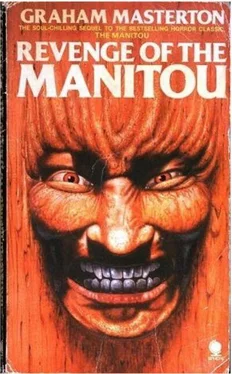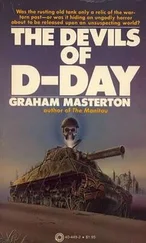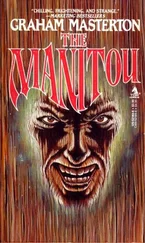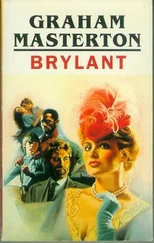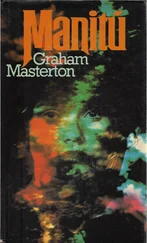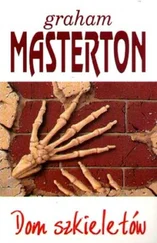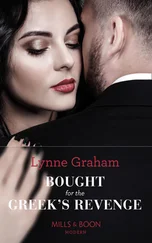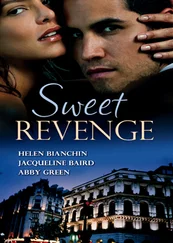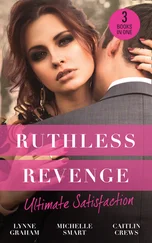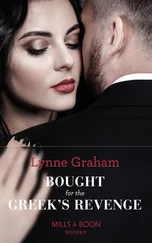Graham Masterton - Revenge of the Manitou
Здесь есть возможность читать онлайн «Graham Masterton - Revenge of the Manitou» весь текст электронной книги совершенно бесплатно (целиком полную версию без сокращений). В некоторых случаях можно слушать аудио, скачать через торрент в формате fb2 и присутствует краткое содержание. Жанр: Ужасы и Мистика, на английском языке. Описание произведения, (предисловие) а так же отзывы посетителей доступны на портале библиотеки ЛибКат.
- Название:Revenge of the Manitou
- Автор:
- Жанр:
- Год:неизвестен
- ISBN:нет данных
- Рейтинг книги:3 / 5. Голосов: 1
-
Избранное:Добавить в избранное
- Отзывы:
-
Ваша оценка:
- 60
- 1
- 2
- 3
- 4
- 5
Revenge of the Manitou: краткое содержание, описание и аннотация
Предлагаем к чтению аннотацию, описание, краткое содержание или предисловие (зависит от того, что написал сам автор книги «Revenge of the Manitou»). Если вы не нашли необходимую информацию о книге — напишите в комментариях, мы постараемся отыскать её.
Revenge of the Manitou is the follow-up to The Manitou, which once again features Harry Erskine, Singing Rock, and a host of Indian stories creating a spine-tingling sequel with some disturbingly horrific passages.
Revenge of the Manitou — читать онлайн бесплатно полную книгу (весь текст) целиком
Ниже представлен текст книги, разбитый по страницам. Система сохранения места последней прочитанной страницы, позволяет с удобством читать онлайн бесплатно книгу «Revenge of the Manitou», без необходимости каждый раз заново искать на чём Вы остановились. Поставьте закладку, и сможете в любой момент перейти на страницу, на которой закончили чтение.
Интервал:
Закладка:
“What’s a ‘sokwet’ when it’s at home?” asked Harry. “It sounds like the first requirement for double pneumonia.”
“Sokwet is the Alqonquian word for ‘eclipse.’ It seems to be tied in here with the word wata, which means ‘star.’ So I think we can safely assume that one of these children was talking about the day of the dark stars itself. The word oweaoo means ‘circle,’
and pados means ‘boat,’ but since they’re written here in isolation, they’re not particularly helpful. I suspect we’ll discover what they mean, though.”
“Sure,” said Harry. “The hard way.”
Singing Rock said, “These paintings themselves are very interesting. When you first look at them, you’d think they were painted by children.”
“Of course you would,” said Neil. “They were painted by children.”
Singing Rock shook his head. “This style is primitive in some respects, but it isn’t childish. Look at this one. You can find carvings and drawings in this style among the WabanaM and the Etchemis. This one shows the Indians dressed in the costumes of Arapahos. And this one here looks distinctly Iroquois.”
Neil shuffled through the paintings with a frown. “You mean the medicine men inside the children created these paintings? Not the children themselves?”
“Not fully,” said Singing Rock. “These were done a few days ago, at a time when the medicine men wouldn’t have taken hold of the children’s minds completely. But their tribal characterstics have certainly shown through. I can identify Sioux, Micmac, Hopi, Apache, Shoshoni, and Modoc, as well as the ones you’ve got in your hand.”
“Does that help?” asked Neil.
“It helps a great deal. It means that I can tell who some of the medicine men are.
Each tribe has its own mythical medicine heroes. The Wabanaki, for instance, had Neem, the bringer of thunder. The Apaches used to revere a medicine man called No Name, who was said to wear a live rattlesnake as a headdress. Misquamacus will almost certainly have called on the best medicine man from each tribe, and so it won’t be too difficult to make a list of the team we’re going to be up against.”
“Singing Rock sees the eternal struggle between red men and white men as a kind of occult football game,” remarked Harry.
Neil sat down. “What I don’t quite understand is, what are these demons like, these things they’re going to call down to destroy us? I mean, what are they actually likeT
At that moment, as if prompted by fate, the telephone in the front room began to ring.
Neil said, “Excuse me,” and went to answer it.
Singing Rock and Harry waited while Neil talked. Harry crushed out his cigarette and swilled down the last of his beer. Then Neil came back into the room, and his face was flushed with anxiety.
“What’s wrong?” asked Harry. “You look as though you’ve seen a ghost.”
“It was Mr. Saperstein, from the school,” said Neil. “He heard you talking to Mrs.
Novato in the school yard, and he guessed you’d want to know.”
“Know? Know what?”
Neil looked at him, and Harry could see that he was very close to collapse. Singing Rock advised, “You’d better sit down.”
Neil shook his head. “Mr. Saperstein wants us to come down there right away. He took some photographs of Toby and the rest of the class last week, when they were dancing in the playground. He’s just had the pictures developed, and he says that something’s shown up on them that’s almost driven him mad.”
SEVEN
Mr. Saperstein met them in his office overlooking the back of the school. It was a cramped, converted storeroom, and it was heaped with music scores and books on composers and cellos with broken strings. Harry and Neil and Singing Rock could hardly crowd themselves inside, and Mr. Saperstein had to move a battered trumpet case and a bust of Beethoven with a chipped nose before Harry could sit down.
“I’m sorry I eavesdropped on your conversation with Mrs. Novato,” Mr. Saperstein said apologetically. “It was just that I was passing, and I really couldn’t help myself.
I’m afraid I’ve always been a bit of a busybody.”
“Good thing you were,” said Singing Rock flatly. “This is a desperate time.”
Mr. Saperstein unlocked his desk drawer and took out a paper folder.
“I should explain that I’m pretty keen on photography,” he said. “I take my camera around most of the time. It was quite natural for me to shoot a picture of the children in the school yard. I had a little exhibition of school photographs at Sonoma last year, and it was really quite successful.”
Harry put in impatiently, “Do you think we could just take a look at the shots?”
Mr. Saperstein raised one hand. “What you have to realize is that I came into Mrs.
Novato’s classroom, and she said she could see her children dancing in a strange way. I looked out of the window, too, and she was right. They were kind of shuffling around in a circle, with their arms on each other’s shoulders. I thought it could have been a Greek dance, you know, like in Zorba the Greek?”
Harry sighed. “The pictures, Mr. Saperstein?”
“Of course,” said the music teacher, opening the folder. “But before you look at them you must realize that all I saw in that school yard was children. Nothing else at all.”
One by one, Mr. Saperstein passed around the large black-and-white prints. There were five of them, each showing the school yard from Mrs. Novato’s classroom window, and the children shuffling around in a circle. In the first picture, Neil could pick out Toby and Andy and Daniel Soscol and Debbie Spun. But there was something else besides. Out of the center of the circle of children, mostly obscured by their bodies, a sort of whitish haze seemed to be forming, like a twisting column of smoke.
In the next picture, the haze was widening, and rising even higher above the children’s heads. It was beginning to form into tentacular coils, which in the third picture were writhing almost up to the lower branches of the maple tree at the edge of the school yard.
The fourth and the fifth photographs were the most alarming. They showed a towering beast, draped with scores of curling arms, like a kind of gaseous squid, high above the children. Although it was faceless and formless, it possessed a terrible and evil aspect, as if it was formed out of the essence of ancient malevolence. It seemed verminous and unhealthy, and riddled with diseases of the mind and the spirit.
“What is that thing?” asked Neil. “Is that some kind of photographic illusion?”
Mr. Saperstein replied, “No trick, Mr. Fenner. They were developed for me by Charlie Keynes down at the newspaper office. He does all my prints. He swears blind that this is the way they came out.”
“Maybe the light got into the film, you know, and fogged it,” suggested Neil.
Mr. Saperstein shook his head. “That’s not fogging, Mr. Fenner. Any amateur could tell you that.”
“You’re right, Mr. Saperstein,” concurred Singing Rock, quietly. “These pictures are not fake.”
“But how can you tell?” asked Neil. “It must be easy to take an airbrush or something and-”
Singing Rock smiled, and benignly silenced him. “No amount of airbrushing could ever portray what’s on this photograph, Neil, because no artist knows what this creature looks like or what it is. This creature is one of the shapeless ones who guard the threshold between this world and outside. They are messengers of the ethos in which the great old ones have dwelled for more centuries than I could count.
“This thing is a herald, if you can call it that, for Pa-la-kai the demon of blood, and Nashuna the demon of darkness, and for Quul the demon of insanity. Those three, in their turn, are servants of Rhenauz the demon of evil, and Coyote the demon of corruption. Above all these, though, and guarded by a pack of creatures called the Eye Killers, is Ossadagowah, the son of Sado-gowah, the demon who can be conjured up but can never be returned, except of his own free will.”
Читать дальшеИнтервал:
Закладка:
Похожие книги на «Revenge of the Manitou»
Представляем Вашему вниманию похожие книги на «Revenge of the Manitou» списком для выбора. Мы отобрали схожую по названию и смыслу литературу в надежде предоставить читателям больше вариантов отыскать новые, интересные, ещё непрочитанные произведения.
Обсуждение, отзывы о книге «Revenge of the Manitou» и просто собственные мнения читателей. Оставьте ваши комментарии, напишите, что Вы думаете о произведении, его смысле или главных героях. Укажите что конкретно понравилось, а что нет, и почему Вы так считаете.
